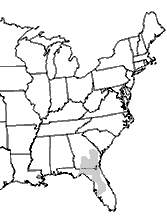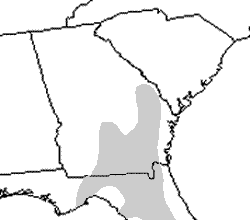Striped Newt (Notophthalmus perstriatus)



Photos by J.D. Willson unless otherwise noted
| Description: The striped newt (Notophthlamus perstriatus) ranges from 2-4 inches (5-10 cm) in length (snout-vent length). Adults are usually colored with an olive to brown back and red stripes along the back. The belly is lighter colored than the back and sides and is usually a yellow or orange color with black spots.
Range and Habitat: Striped newts are only found in a small section of southeastern Georgia and northeastern Florida. They require shallow, unpolluted water usually with some kind of vegetation. Temporary ponds or bays are more preferred because there are no fish, among other predators, which increases larval survival. Habits: Striped newts breed from late winter to early spring. Fertilization is internal and eggs are laid in late spring, usually in temporary ponds. Larvae are aquatic. Though uncommon, there is an eft, or juvenile, stage present in striped newts, however, unlike the eastern newt (Notophthalmus viridescens), the eft stage remains close to water. Also, in striped newts, the eft stage tends to be more brightly colored than the adults, with shades of red or orange and also red dorsolateral stripes. Like other newts, striped newts produce toxins that can be fatal to its smaller predators and very irritating to humans. Conservation Status: The striped newt is currently listed as a rare species as it is only found in one general area. However, it is now being seriously reconsidered as being a threatened species in the state of Georgia due to habitat (wetland) loss. Pertinent Reference: Account Author: Andrew M. Grosse, University of Georgia – edited by J.D. Willson |
